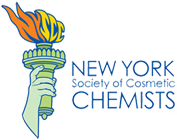In recent years we have seen in the cosmetic market an increase of simplified products with fewer ingredients.
The marketing message of these products is often linked to the ingredients sourcing, functionality, and safety (including the absence of the so called no-no ingredients). Labeled as clean beauty products, they often rely on natural ingredients that, due to the identification of natural with recognized by the human body, biodegradable, and often used in traditional medicine, they easily fit into the concept of safety (and carry a nice story on sourcing). But what about efficacy? Is it possible today to develop clean beauty products, carrying the purest and most ethical sourced natural ingredients, and prove their efficacy with Science? Technology and science is available today for both developing the natural extracts and for testing them, therefore increasing their safety and efficacy while maintaining their positive image of clean, pure, eco-friendly, safe and sustainably sourced. Technologies derived from the pharma and the imaging industries are available at affordable cost and flexibility. Genomics, proteomics and metabolomics analysis are now offered to the cosmetic scientist1 as well as machines able to qualify and quantify skin characteristics in a non-invasive way. In other words, it is finally possible to verify the scientific edge and efficacy of any natural and natural derived ingredient.
Raw materials – Minimal Processing
Raw materials sourcing from sustainable supply chain are often linked to:
– Biological agriculture
– Sustainable harvesting form the wild
These raw materials seem to emerge in the food supply chain first. Initial markets are in the country of origin on a micro-scale (local green markets), following a macro-scale and industrialization step (larger distribution in retail space). Often commercialized at a continent level, they are eventually “discovered” in other continents and growing according to their commercial and marketing appeal.
Example – Pomegranate Seed Oil
Pomegranate is sourced through a sustainable model and cold pressed oil is produced. Due to its unique and elevated level of omega-5 (conjugated linolenic acid, punicic acid) (Table 1), the oil is a strong anti-oxidant, showing protection from UV-induced protein oxidation (carbonylation) and DNA damage.2

Table 1. Omegas Fatty Acids and Vitamin E Composition of Pomegranate Seed Oil
Further research highlighted the oil’s soothing properties such as inhibition of inflammatory mediator lipoxygenase;3 but also its regenerating characteristics, like the stimulation of keratinocytes growth.4
Raw Material – Extraction and Transformation in an Active Ingredient
Raw materials are often transformed into active ingredients for personal care applications. Specific extraction by using biodegradable and natural solvents produces ingredients with specific physical-chemical characteristics and solubility for different cosmetic applications. Once ingredients are validated based on stability assays and scaled up, they can be tested for safety and efficacy in different models (in vitro, ex vivo, and clinical – non animal).
Example – Fucoidan from Seaweed
Seaweeds are rich in phenols derivatives and polysaccharides with protecting activity.5,6 Brown seaweeds also contain a compound called fucoidan that assists with protection from marine pathogens. Fucoidan is a fucose-rich polysaccharide with anti -viral, immune modulating and matrix metalloprotease inhibiting properties.7 By isolating fucoidan from seaweeds, the formulator can use smaller concentrations of the extract. These lower levels reduce the risk of incompatibilities and material setting, color issues and scent, improving overall stability.8 Recent research highlighted the scientific added value of fucoidan as skin soothing and skin regenerating agent (reduction of Trans Epidermal Water Loss, decreased wrinkle’s depth, increase elasticity, reduction of proteases) (Figure 1).9

Figure 1. Seaweed Extract rich in Fucoidan inhibits proteases and tyrosinase (from Fitton JH et al.9)
Conclusion
Natural and Clean Beauty Products contain natural ingredients communicated through ethical sourcing and safety. Scientific tools allow to analyze and test these ingredients for efficacy, therefore helping to select the right ingredient concentration to add to the finished product for optimal functionality. Natural and Clean Beauty Brands need to start validate their ingredients efficacy through real scientific testing and/or select their suppliers based on how scientific is their ingredient offer. Natural ingredients can step up for efficacy once good science is performed to validate their benefits for cosmetic applications. There is a clear need in the market for more science and more credible claims and we can provide them both helping consumers properly chose the cosmetics they need.
References
- Rai A, Saito K, Yamazaki M. Integrated omics analysis of specialized metabolism in medicinal plants. Plant J 90(4):764-787, 2017
- Afaq F, Zaid MA, Khan N, Dreher M, Mukhtar H. Protective effect of pomegranate-derived products on UVB-mediated damage in human reconstituted skin. Exp Dermatol 18(6):553-561, 2009
- Schubert SY, Lansky EP, Neeman I. Antioxidant and eicosanoid enzyme inhibition properties of pomegranate seed oil and fermented juice flavonoids. J Ethnopharmacol 66(1):11-17, 1999
- Aslam MN, Lansky EP, Varani J. Pomegranate as a cosmeceutical source: pomegranate fractions promote proliferation and procollagen synthesis and inhibit matrix metalloproteinase-1 production in human skin cells. J Ethnopharmacol 103(3):311-318, 2006
- Fernando IP, Kim M, Son KT, Jeong Y, Jeon YJ. Antioxidant activity of marine algal polyphenolic compounds: a mechanistic approach. J Med Food 19(7):615-628, 2016
- de Jesus Raposo MF, de Morais AM, de Morais RM. Marine polysaccharides from algae with potential biomedical applications. Mar Drugs 13(5):2967-3028, 2015
- Fitton JH, Stringer DN, Karpiniec SS. Therapies from fucoidan: an update. Mar Drugs 13(9):5920-5946, 2015
- Dell’Acqua G. Sustainable ingredient science: brown algae. Cosmet Toil 128(4): 226-229, 2013
- Fitton JH, Dell’Acqua G, Gardiner VA, Karpiniec SK, Stringer DN, Davis E. Topical benefits of two Fucoidan-rich extracts from marine macroalgae. Cosmetics 2(2): 66-81, 2015

Giorgio Dell’Acqua, PhD, is a cosmetic scientist and a consultant for the personal care industry. A graduate from the University of Rome, Italy, Dr Dell’Acqua worked for 15 years as an investigator in applied medical research in different Research Institutes and Universities, including Mount Sinai Medical School in New York and Harvard Medical School in Boston. Moving to the private sector in 2000, he has spent the last 20 years as an executive and cosmetic scientist in the personal care industry. He is specialized in skin and hair care ingredients, finished product development and technical marketing. He has helped bring more than 200 successful active ingredients and finished products to market and has authored more than 70 publications in medicine and cosmetic science. From last 10 years he has been writing and lecturing on natural cosmetic ingredients, sustainable supply chain, and helped sourcing, developing and bringing to market many natural ingredients. He is an award winning speaker on natural ingredients and a regular writer on sustainability and cosmetic science. He is also the chair of the Scientific Committee for the New York Society of Cosmetic Chemists and its scientific blogger.

